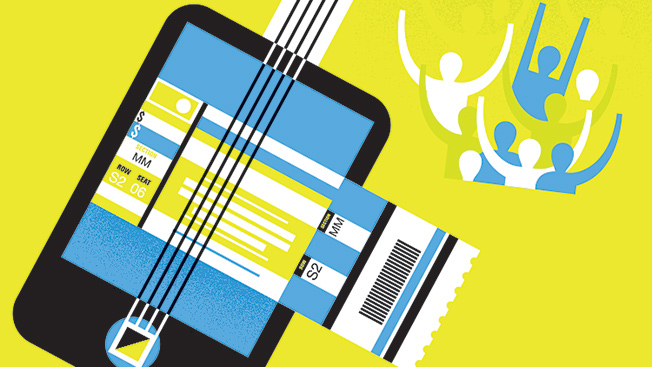Inspiration meets innovation at Brandweek, the ultimate marketing experience. Join industry luminaries, rising talent and strategic experts in Phoenix, Arizona this September 23–26 to assess challenges, develop solutions and create new pathways for growth. Register early to save.
“Ain’t singin’ for Pepsi,” Neil Young wails on “This Note’s for You,” his 1988 anti-commercialism anthem. “Ain’t singing for Coke/I don’t sing for nobody/makes me look like a joke. This note’s for you.”
A decade earlier, Young would have seen no need for such a song. But, by 1988, corporate America had well insinuated its presence into the world of music, with concerts joining sports as a platform for brands to message passionate consumers.
The Rolling Stones forever changed the game in 1981 when they signed a $1 million presenting sponsorship deal with fragrance Jovan (remember Jovan?) for the band’s American tour. For that $1 million, Jovan was allowed to place its logo on the Stones’ tour posters and tickets, and little else. Still, the deal created quite a stir at the time, with music purists screaming sellout and the business world questioning Jovan’s judgment in aligning the brand with rock ’n’ roll’s quintessential bad boys. But 3 million fans turned out to see the tour, which ended up being the Stones’ most successful ever to that point. By the time the decade ended, brands had found their way into the concert halls to an extent that prompted Young to write about it.
Today, live music as a conduit for brand messaging is the norm, with brands touching consumers across the live music experience. Whether it’s a $10 million tour sponsorship or free sticks for the drummer through an endorsement deal, brands are woven into the very fabric of concerts.
According to industry tracker IEG Sponsorship Report, North American-based companies will spend $1.3 billion to sponsor music venues, festivals and tours this year, up 4.4 percent from last year. For the overall sponsorship business, the pace of growth is slowing as brands transition toward less expensive new media, but the decrease in sponsorship dollar growth is not necessarily a negative thing in the bigger picture, at least for music. Digital, social and mobile are not only cheaper, they’re far more targeted in engaging fans, allowing not only brands to more effectively reach their desired consumers but also artists and events.
One primary reason more tickets are selling today is because of the extremely targeted and efficient marketing opportunities afforded by strategic use of mobile, social, email, channel marketing and digital sales media. Most in the live business would agree that 2013 was the year that the music industry significantly moved the needle in using data analytics to sell more tickets and tackle one of touring’s biggest obstacles: lack of awareness.
While to say fans embrace sponsorships might be a stretch, it is safe to say that fans accept the pervasive presence of brands at live events as simply part of the concert milieu, and they do take advantage of brands being woven into that setting, whether it’s through presales, interactive experiences, sampling, sweepstakes, giveaways, or meet and greets. Artist camps often say that tour sponsorships help them keep ticket prices in line and field more eye-popping production and, while the extent to which this is true is debatable, conceptually, at least, fans benefit.
And artists and events benefit beyond the cash. Tour sponsorships provide huge marketing muscle to a live event, and the depth of integration and activation is extremely sophisticated. The engagement raises the profile for all stakeholders, and transcends the actual concert.
The Rolling Stones remain on the leading edge. In a deal that brought home the Concert Marketing & Promotion Award at the 2013 Billboard Touring Awards, the Stones’ partnership with Citi on the band’s North American 50 & Counting tour shows the power of the social-driven brand-band relationship. In just eight weeks, more than 747 million social impressions were generated by #StonesVIP and #Stones50, and #StartMeUpWednesday—a campaign centering on the band’s tour announcement—reached more than 5.3 million users on Twitter. The tour went on to gross $126 million from just 23 shows in North America last year.
The live business is likely to remain in growth mode for many years to come, and live music sponsorship opportunities should experience parallel growth. The key to a successful, synergistic sponsorship is for all parties to benefit (whether it’s selling widgets or tickets), avoid a hard sell that will turn off fans, and add value to the event.
Ray Waddell (@kingvol) is executive director, content and programming, touring and live entertainment at Billboard.








